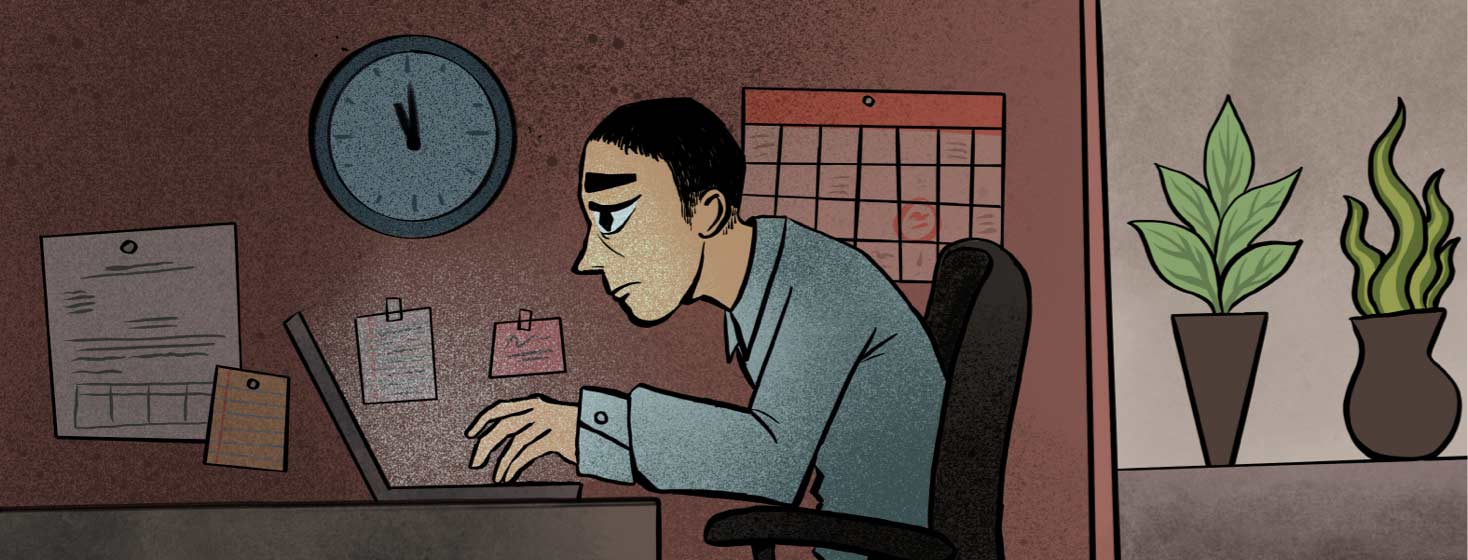Tired Eyes and Chronic Dry Eye
Reviewed by: HU Medical Review Board | Last updated: May 2023
After a long day at the office, you probably feel tired and ready to unwind. Your eyes are likely feeling the strain of the hours spent in front of your computer. Tired eyes, also known as eye strain, is a symptom rather than a condition or diagnosis. For example, long hours in front of a computer or screen can lead to tired and dry eyes.
Here, we explain what tired eyes are, how tired eyes may happen at the same time as dry eyes, different causes of tired eyes or eye strain, and ways to manage your tired eyes. Understanding the connection between tired eyes and dry eye syndrome can help you reduce your symptoms and get the right treatment sooner.
What is eye strain or tired eyes?
Like any other muscle in your body, the muscles around your eyes can get tired and sore from overuse. Eye strain or tired eyes occur when you use your eyes for too long or too intensely.
What causes eye fatigue?
The most common cause of tired eyes is computer vision syndrome. Computer vision syndrome (CVS) is also known as digital eye strain. Digital eye strain results from staring at an electronic device, such as a computer, phone, tablet, or e-reader, for long periods. With the average American worker spending more than 7 hours per day using a computer either in the office or at home, it is easy to see that this is a common problem in the United States and around the world.1
Long drives and staring at the road for a long time may also cause tired or strained eyes.2
Screen time, dry eye, and tired eyes
Looking at a computer or digital screen can make your eyes work harder than usual. Reading on a digital screen is different than reading a piece of paper. The contrast of the letters and the light on the screen may be why your eyes become strained. However, the exact cause of digital eye strain is not well understood.1
When viewing a digital screen, you blink less often. A study of 40 healthy people showed that blink rates decreased from 17 times per minute at rest to just 6 times per minute while reading on a digital screen. Blinking washes tears over the surface of the eye, keeping it moist and maintaining vision. When blinking decreases, dry eye syndrome can occur.3
This can explain why screen time may be related to both dry eyes and eyes that become tired or strained.3
Possible treatments
When your dry eye disease symptoms also include feeling like your eyes are tired, it is often related to the amount of time you are spending in front of a screen.
Most of the time, symptoms of tired eyes can improve by giving your eyes a break from the screen for a few minutes. It is important to see your eye doctor to make sure you are up-to-date with your eyeglasses if needed. Your doctor will also make sure your tired eyes and dry eyes are not something more serious.
There are some things you can do yourself to help relieve your tired eye symptoms, including:1,2
- Wear your eyeglasses when needed and make sure your prescription is current
- Read in well-lit rooms when possible
- Decrease the brightness of your computer screen
- Set a timer to give yourself a screen break and remind yourself to blink more often
- Take a break from long drives by stopping to briefly rest your eyes
- If artificial tears are helpful for you, consider using them before and regularly during screen time
